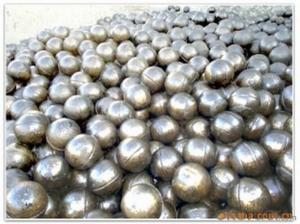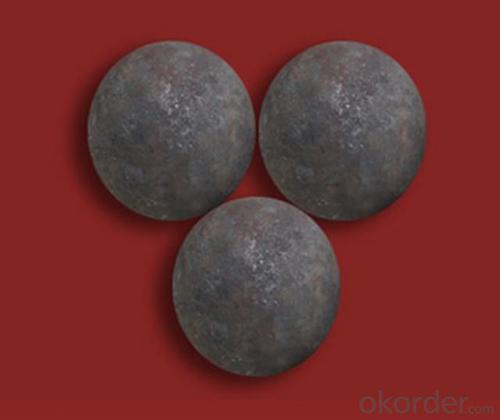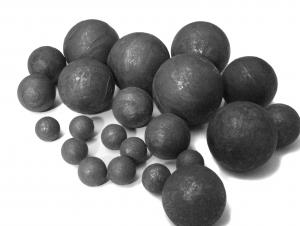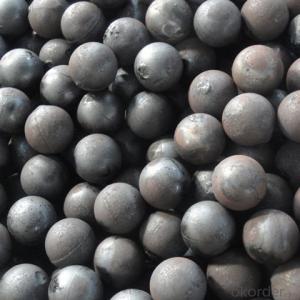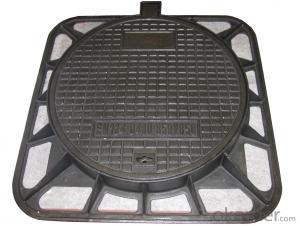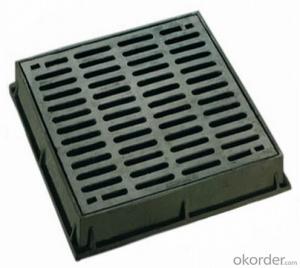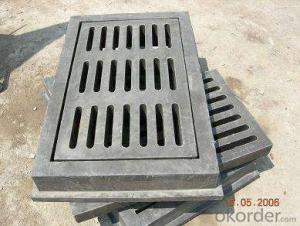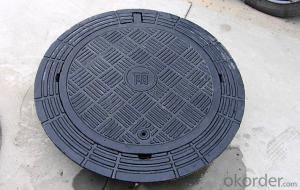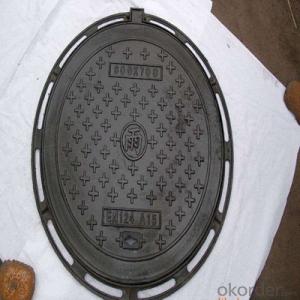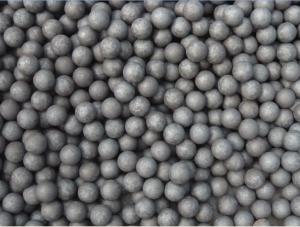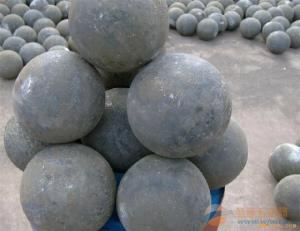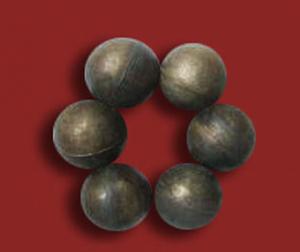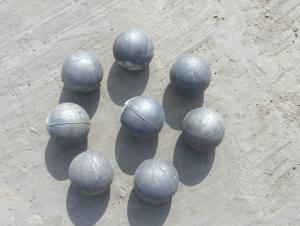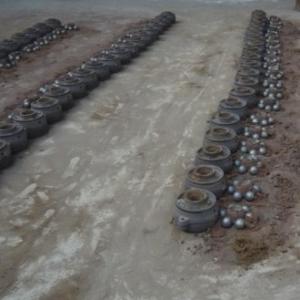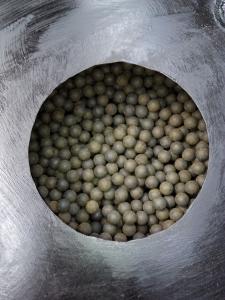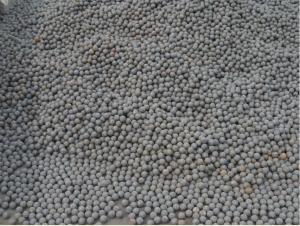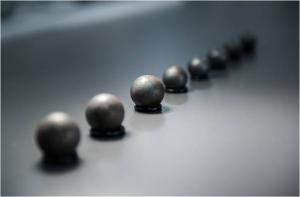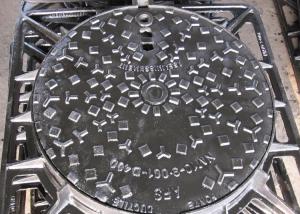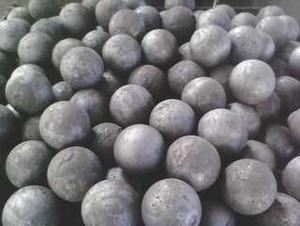Forged Grinding Ball with Excellent Quality
- Loading Port:
- China Main Port
- Payment Terms:
- TT OR LC
- Min Order Qty:
- -
- Supply Capability:
- 200000M.T./Year /month
OKorder Service Pledge
OKorder Financial Service
You Might Also Like
Features of Forged Grinding Ball with Excellent Quality:
1) Size:20-150mm
2) Hardness:55-65
3)Certificate:ISO9001:2008
4)Performance: Unbreakable
Chemical Composition of Forged Grinding Ball with Excellent Quality:
Chemical elements of forged steel balls | |||||
C | Si | Mn | Cr | S | P |
0.50-0.65 | 0.15-0.37 | 0.6-1.2 | ≤0.25 | ≤0.04 | ≤0.04 |
0.7-0.9 | 0.45-0.75 | 0.7-1.25 | 0.11-0.4 | ≤0.04 | ≤0.04 |
Technical Parameters of Forged Grinding Ball with Excellent Quality:
Nominal diameter
| Diameteical Tolerance | Weight of single ball in average | Surface hardness | Impact toughness |
(mm) | (mm) | (g) | (HRC) | (j/cm) |
Φ20 | +2 -1 | 32 | 50-65 | ≥12 |
Φ25 | +2 -1 | 64 | 50-65 | ≥12 |
Φ30 | +2 -1 | 110 | 50-65 | ≥12 |
Φ40 | +2 -1 | 263 | 50-65 | ≥12 |
Φ50 | +2 -1 | 513 | 50-65 | ≥12 |
Φ60 |
+3 -2
| 888 |
50-65
|
≥12 |
Φ70 | 1410 | |||
Φ80 | 2104 | |||
Φ90 | 2996 | |||
Φ100 | 4110 | |||
Φ110 |
+4 -2
| 5457 |
50-65
| |
Φ120 | 7102 | |||
Φ130 | 9030 | |||
Φ140 |
+4 -3 | 11278 |
50-65
| |
Φ150 | 13871 |
- Q: Why does the precision casting factory not usually make iron castings?
- Jiangyin Lin Xing stainless steel (precision manufacturing) Co., Ltd. to provide professional precision casting
- Q: What are the factors affecting the machining process of the casting material and structure?
- As for the metallographic structure, usually the finished products after casting are treated by heat treatment. The mechanical properties of the carbon steel after heat treatment (quenching and tempering) are detected. The stainless steels are treated by heat treatment (solid solution, etc.) and the metallographic structure is analyzedThere is a lot of talk and a bit of confusionIf you have a specific brand, you can search for Baidu or buy tools
- Q: What is normalizing, annealing, tempering, quenching? What is the difference between forging parts and casting parts?
- According to the requirements of the workpiece annealing, there are many kinds of annealing process specifications, such as full annealing, spheroidizing annealing and stress relieving annealing. Steel the steel quenching is heated to the critical temperature Ac3 (hyposteel) or Ac1 (hypereutectoid steel) above a certain temperature, holding time, so that all or part of 1 Austenitic, then the cooling rate is greater than the critical cooling rate of fast cooling to below Ms (or near Ms isothermal) of martensite the body (or bainite transformation) heat treatment process. Aluminum alloys, copper alloys, titanium alloys, tempered glass and other materials are usually treated by solid solution or heat treatment with rapid cooling process. Tempering is a heat treatment process where the workpiece is hardened and heated to a temperature below AC1, which remains cool for a certain period of time and then cools to room temperature. Tempering generally followed by quenching, the purpose is: (a) to eliminate the residual stress caused by quenching, prevent deformation and cracking; (b) hardness, strength, plasticity and toughness of workpiece is adjusted, to use performance requirements; (c) the size of organization and stability, ensure the accuracy improvement; (D) and to improve the processing performance. Tempering is therefore the last important step in obtaining the desired properties of the workpiece. According to the tempering temperature range, tempering can be divided into low temperature tempering, medium temperature tempering and high temperature tempering. This answer is recommended by the questioner
- Q: What's the effect of casting copper?
- In general cast iron, the mass fraction of copper below 3% - 3.5% can increase the hardness; but when the cast iron has a tendency to chill, or when there is a hard point of free carbides, the addition of copper decreases the hardness.Copper can be used to improve the wear resistance, abrasion resistance, and shock absorption of cast iron, so it is often used in the manufacture of sliding friction iron castings, such as drilling machine spindle, automobile and tractor, valve tappet, etc.. But in white cast iron or chilled cast iron, adding copper does not make any improvement in its abrasion resistance.Copper for certain heat resistant cast iron and austenitic cast iron can increase the heat resistance and corrosion resistance, copper - chromium composite alloy to prevent oxidation under high temperature in the atmosphere from the skin effect is particularly effective, heat resistance and corrosion resistance of austenitic cast iron containing many mass fraction of 4% ~ 7% copper.
- Q: What are the effects of stiffeners on castings, or on welded parts (for 2 tons or less), casting or weldments on stiffeners?
- 3, weight: if reinforcement in products, casting weight is generally greater than the welding parts (the internal organizational structure and mode of production determines the mechanical properties of materials, so it determines the weight of the product), considering the cost of transportation, certain priority structure.
- Q: What's the density of the cast iron? The density is thin and the density is thin
- Generally cast iron thick place, density is empty, thin place density a little more.
- Q: What is the difference between casting and stamping parts?
- Separation process is also called blanking, the purpose is to make the stamping parts along a certain contour line from the sheet metal separation, at the same time guarantee the quality requirements of the separation section. Stamping is a highly efficient production methods, the use of compound die, especially the multi station progressive die stamping process can be completed in a multi machine, realized by belt uncoiling, leveling, punching, forming and finishing automatic production. High production efficiency, good working conditions, low production costs, can produce hundreds of parts per minute.
- Q: When there is no flaw detection for large casting parts, is there any crack inside?
- According to the industry standards, within the scope of the standard requirements to determine whether the product is qualified
- Q: What are the general technical requirements for casting parts?
- Satisfy appearance quality (appearance defect, quality change, size deviation)Intrinsic quality (composition, properties, internal organization)Service performance (abrasion resistance, corrosion resistance, heat resistance, pressure resistance)
- Q: When the blank is a casting, the margin is evenly distributed, how should rough machining?Please help friends from mechanical classes.There is another problem: in the NC milling plane contour machining, when the rough margin is large, how to deal with.Who can help in time, add 20 reward. Urgently!!
- Even distribution is a good thing. Generally, the machining allowance of the casting is uneven.If the processing depends on how your processing techniques have been arranged.In the NC milling plane contour machining, when the rough margin is large, how to deal with.1. Return to the foundry, too large margin improvement.2. Then you can spend more time on it.
Send your message to us
Forged Grinding Ball with Excellent Quality
- Loading Port:
- China Main Port
- Payment Terms:
- TT OR LC
- Min Order Qty:
- -
- Supply Capability:
- 200000M.T./Year /month
OKorder Service Pledge
OKorder Financial Service
Similar products
Hot products
Hot Searches
Related keywords
